Since the release yesterday morning, we have been working feverishly with the Intel Xeon D-2100 series. Specifically, we have an early sample of the Supermicro X11SDV-4C-TLN2F motherboard. This has an onboard Intel Xeon D-2123IT CPU. You can read more about the Intel Xeon D-2100 series SKU list and value analysis, but this is a $213 MSRP CPU. Here is the spec page. The 16 core Xeon D-2183T is starting burn-in so that we can look at the other end of the spectrum in the near future.
Intel Xeon D-2100 Networking
One of the first questions we had was around networking. We were pleased to see that Ubuntu 16.04.3 LTS and CentOS / RHEL 7.4 recognized the NICs out of the box and used the Intel 40GbE driver for the Intel 700 series NICs.
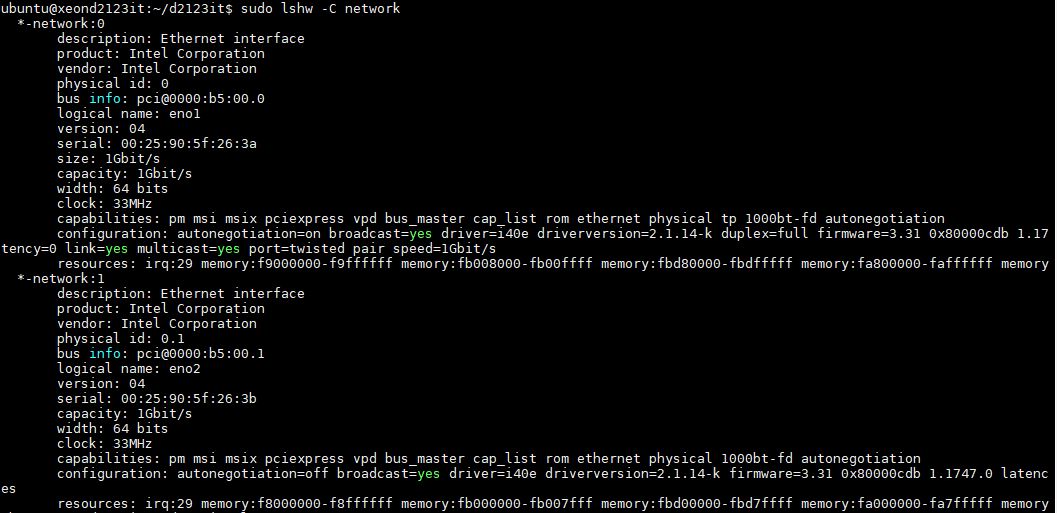
The test platform did not give us a model number, but this is a good start. The driver=i40e tells us that we have a 700 series based NIC. Note, vendors are able to provide networking other than the integrated NICs for their customers.
Lewisburg PCH Confirmed
We received a few angry e-mails from readers about calling the Xeon D-2100 essentially a Xeon Silver / Gold 5100 series CPU complex with Lewisburg PCH IP in our Intel Xeon D-2100 Architecture and Platform Overview.
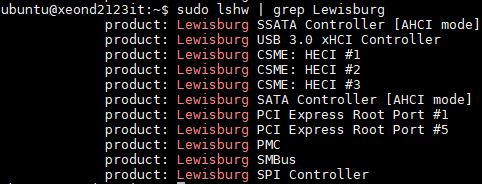
A screenshot says it all. We can confirm Lewisburg PCH IP is being used in the Intel Xeon D-2100.
Intel Xeon D-2100 Series RAM
We fired up the system with 4x 32GB of DDR4-2400 and it was immediately recognized and online. There are larger capacity 64GB and 128GB modules available. At around $400 per stick, this seems about the upper limit of what we would expect the four core model to be populated with.
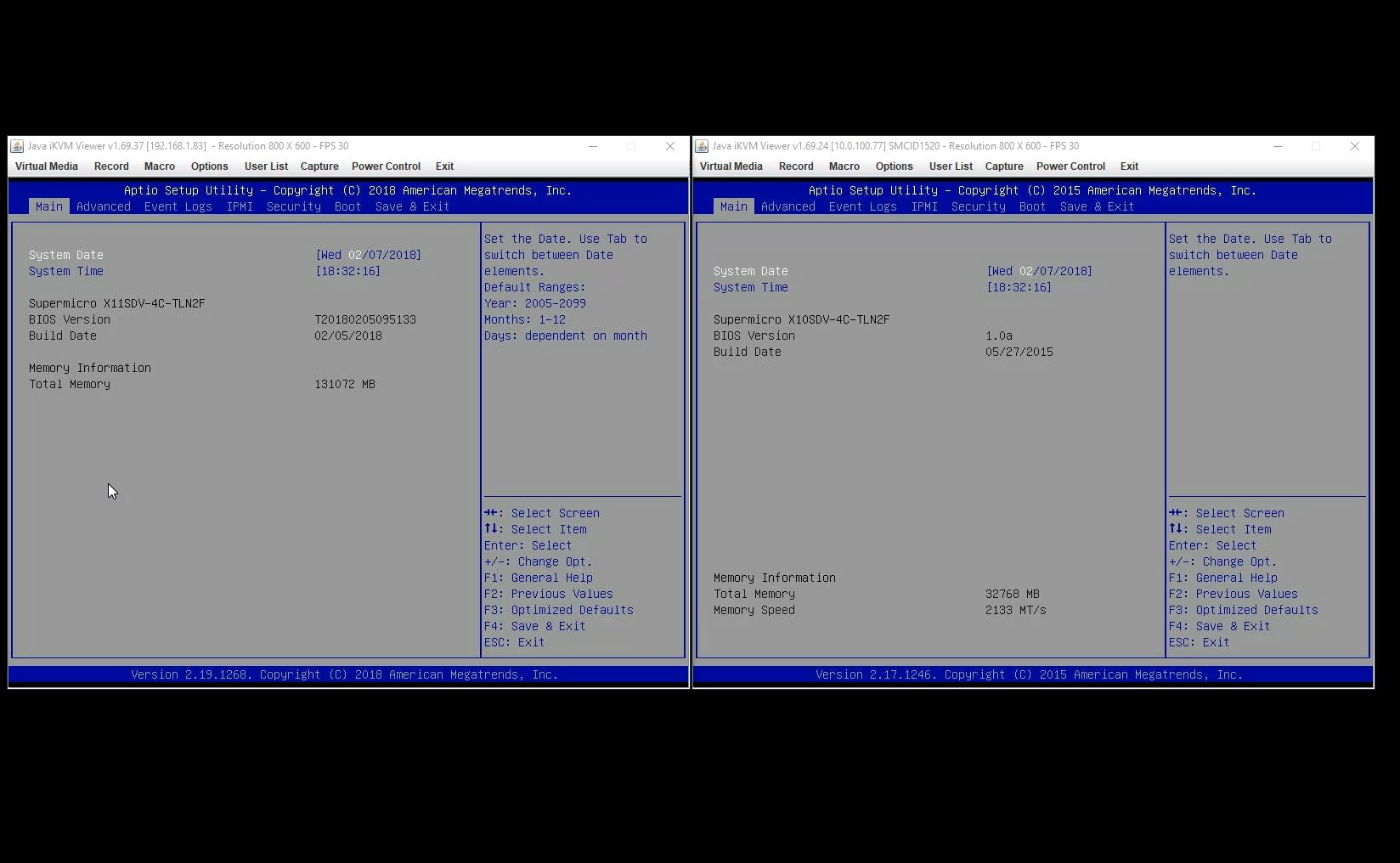
Unlike the previous generation Intel Xeon D-1500 series, some SKUs can hit up to DDR4-2666. At the same time, with this new generation, you want to populate all four DIMM channels. On the Xeon D-1500 series, it is a dual channel memory controller so one could essentially get full memory bandwidth with just two DIMMs installed.
Intel Xeon D-2123IT CPU and the AVX-512 Surprise
We confirmed that AVX-512 is running. It also appears to be running AVX-512 very well. The four core AVX-512 turbo frequency is supposed to be around 2.6GHz with the Xeon D-2123IT which is significantly higher than we see with the Xeon Silver line.
Here is what the lscpu output looks like:
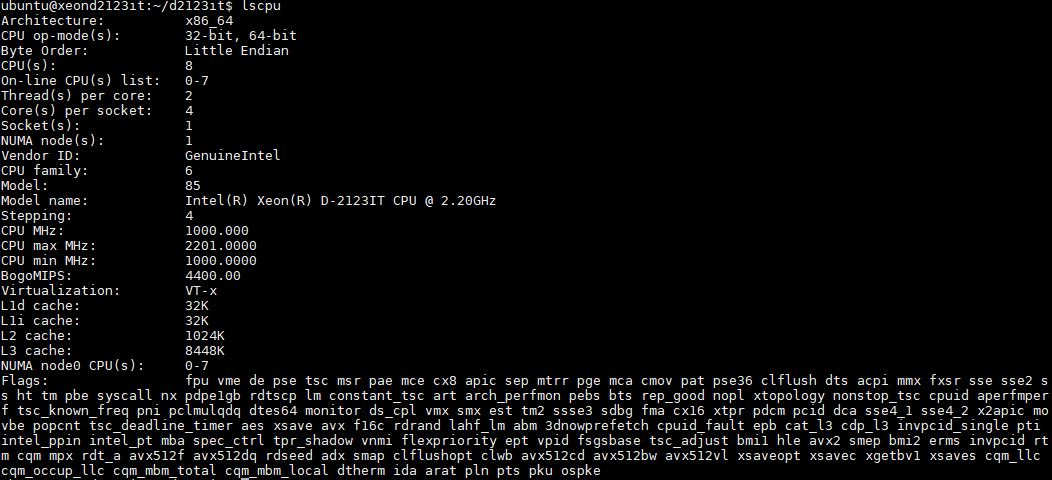
You can see the newer and larger 1MB L2 cache in this picture along with avx512 instruction support.
Just as a comparison, here is a single Intel Xeon Silver output
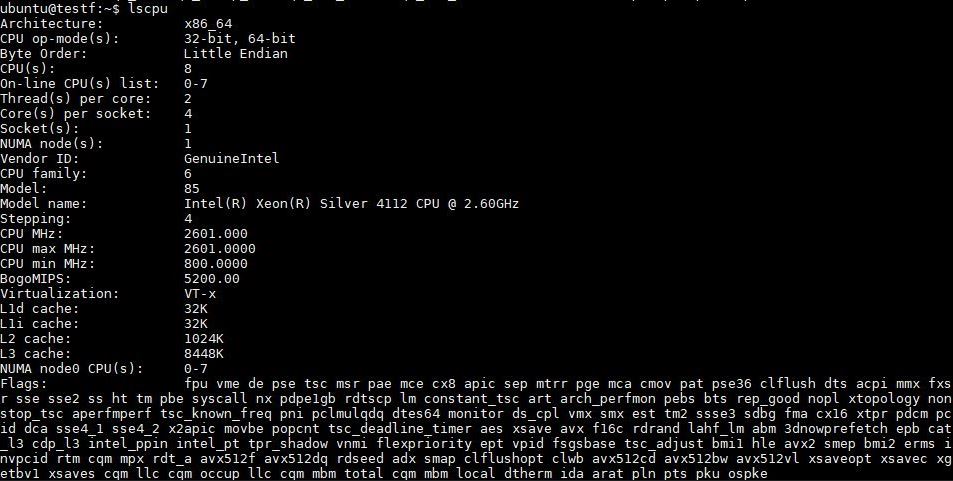
We thought that is an interesting comparison as they have the same number of cores, same maximum clock speeds, but the Xeon Silver 4112 is priced significantly higher albeit on a larger platform.
Initial Intel Xeon D-2100 Power Consumption
Here are a few key stats we are recording in a Supermicro CSE-505-203B which is a popular 1U chassis for these motherboards. The system is equipped with 4x 32GB DDR4-2400 and an Intel DC S3700 400GB SSD.
Due to the X11SDV-4C-TLN2F design, and the fact that we were unable to get the ATX power adapter in time, we are using the CSE-505-203B to provide DC power to the motherboard which is what would be expected with the platform. That took a bit of wire splicing to get working but as these boards roll out there will be an ATX adapter cable.
- Idle: 53.0W
- 60% Load (non-AVX): 84.7W
- AVX-512 GROMACS Load: 101.2W
We held these workloads for 20 minutes in a 17.0C data center with 45% RH on 208V power. Note, these are slightly outside of where we normally take measurements and on a shorter duration interval. At the same time, we wanted to get information out as soon as possible.
Initial Intel Xeon D-2123IT Benchmarks
We are going to have a formal piece with a larger suite, but we also wanted to show a few data points in terms of how the system is performing. The Intel Xeon D-2123IT numbers here are presented as a preview as they do not have the same runtimes as our formal benchmark figures have. We will have a full suite available next week when the runs complete.
Python Linux 4.4.2 Kernel Compile Benchmark
This is one of the most requested benchmarks for STH over the past few years. The task was simple, we have a standard configuration file, the Linux 4.4.2 kernel from kernel.org, and make the standard auto-generated configuration utilizing every thread in the system. We are expressing results in terms of compiles per hour to make the results easier to read.
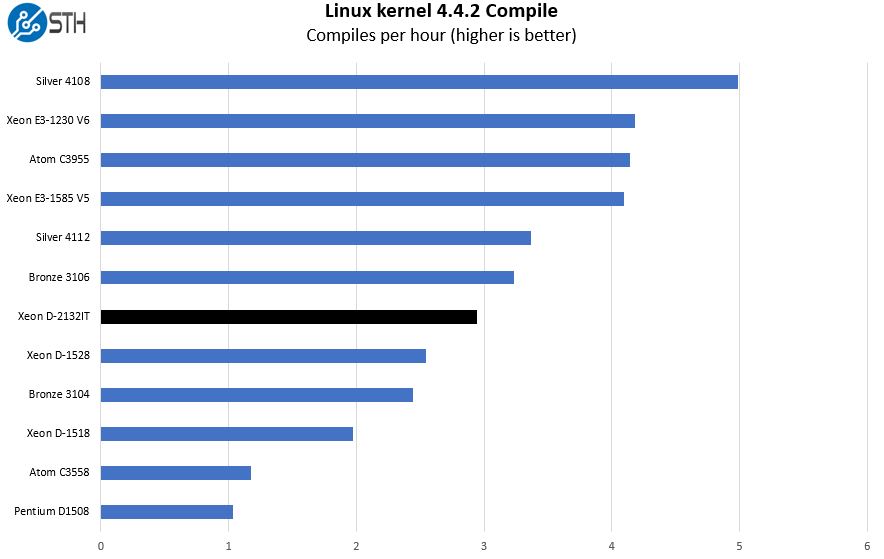
Here we see the Intel Xeon D-2132IT perform relatively well. Indeed, it is faster than the six core Intel Xeon D-1528 from the previous generation.
c-ray 1.1 Performance
We have been using c-ray for our performance testing for years now. It is a ray tracing benchmark that is extremely popular to show differences in processors under multi-threaded workloads. Here is our newer Linux-Bench2 8K render to show differences.
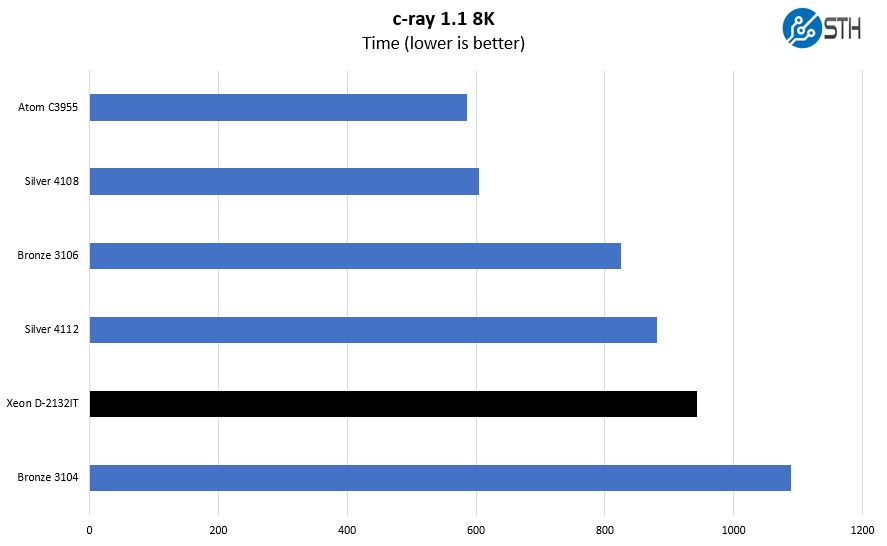
Here the architectures with more cores perform relatively well so we see the new Xeon D-2132IT just shy of matching the 4 core/ 8 thread Intel Xeon Silver 4112. We also see that the Atom C3955 has an advantage just by the sheer volume of cores it has and its cache configuration. In some applications, there will be overlap between the bottom of the Xeon D-2100 series perofrmance range and the upper eschelon of the Intel Atom C3000 range. The Intel Atom C3955 is a lower power but significantly costlier part.
7-zip Compression Performance
7-zip is a widely used compression/ decompression program that works cross-platform. We started using the program during our early days with Windows testing. It is now part of Linux-Bench.
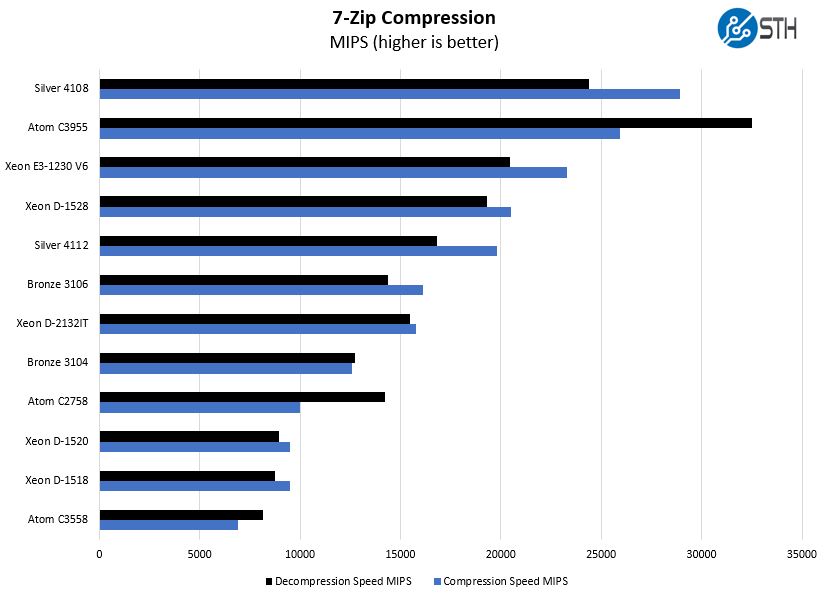
GROMACS STH Small AVX2/ AVX-512 Enabled
We have a small GROMACS molecule simulation we previewed in the first AMD EPYC 7601 Linux benchmarks piece. In Linux-Bench2 we are using a “small” test for single and dual socket capable machines. Our GROMACS test will use the AVX-512 and AVX2 extensions if available.
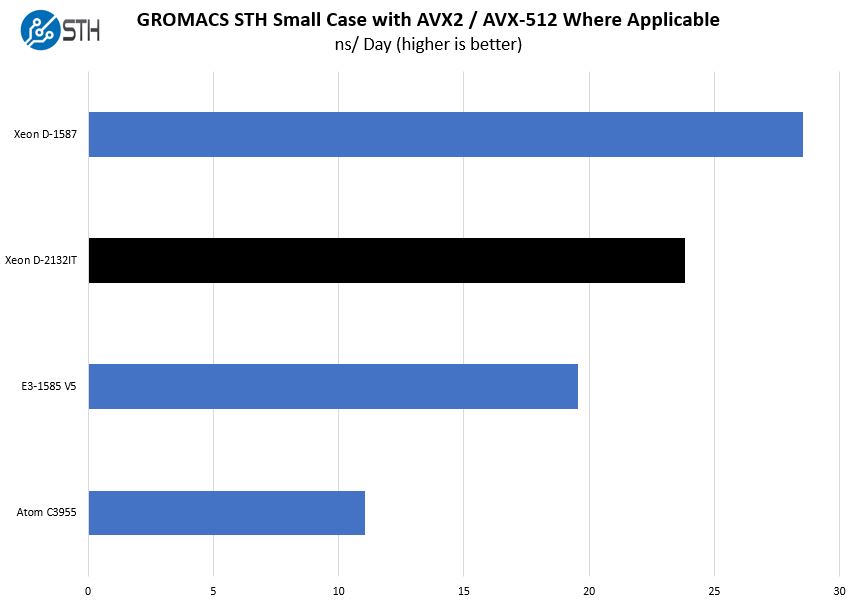
Here is a really interesting result. Between AVX-512 and the relatively higher clock speeds, the Intel Xeon D-2132IT shows its prowess over higher clocked Intel Xeon E3 parts as well as the 16 core Intel Xeon D-1587. Even with a quarter as many cores, the new Intel Xeon D-2132IT Is able to use clock speed and AVX-512 to come somewhat close to the 16 core previous generation part.
Final Words
Performance is better than initially expected, likely due to the relatively high all core turbo clock speeds. Power consumption is (significantly) higher than the Intel Xeon D-1500 and Atom C3000 series. When we look at higher core count parts, the Intel Xeon D-1587 as a 16 core example, dual-channel DDR4 can start to be a noticeable bottleneck in many workloads. With the Intel Xeon D-2100 series, one essentially gets the quad channel speed of the Intel Xeon E5 V4 generation or potentially slightly more on the DDR4-2666 SKUs. What that means is that this is the first embedded platform that can essentially match if not beat a single socket mainstream platform in both core performance and memory bandwidth. That is no small feat.
Aside from performance, we were slightly shocked to see just how well the compatibility testing is going. The platform is working consistently on OSes that support the Intel Xeon Scalable generation of platforms. That is absolutely awesome and is due to Intel using the Xeon Scalable IP along with the Lewisburg PCH IP in the Xeon D-2100 series.
There is certainly more to come in the near future. Stay tuned to STH.

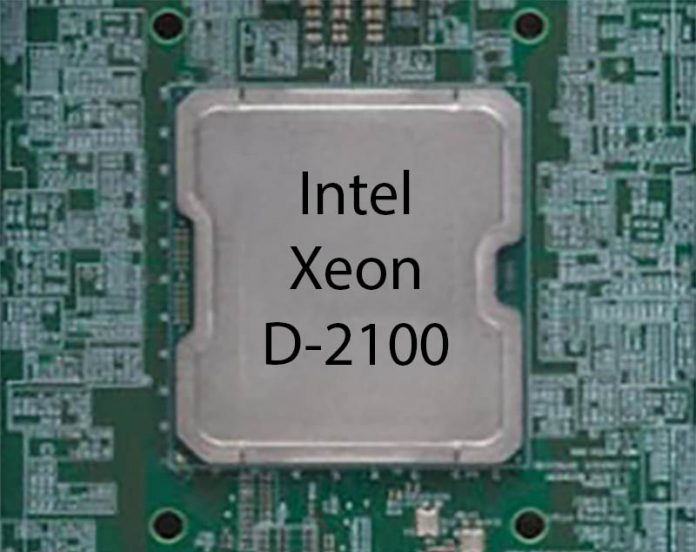



Hi,
Since I read that the mainboard takes 12v only power input, are drives powered by the mainboard or a separate power supply?
Thanks. Best wishes, Robert
Robert – SATA DOMs can be powered by the motherboard. Other drives are powered by the PSU.
Thank you for the information. Best wishes, Robert.
It looks like the 4-pin molex is missing from the X10SDV line. In a case like the CS-E300, the 4-pin molex on the board itself was used to power 2.5″ SSD. With this X11SDV line, how would you power the 2.5″ SSD in any of the SFF cases like the CS-E300?
Thanks,
Any idea if the sff hdplex psu will be compatible with using ATX Power Cable adpatator ?
Thanks.